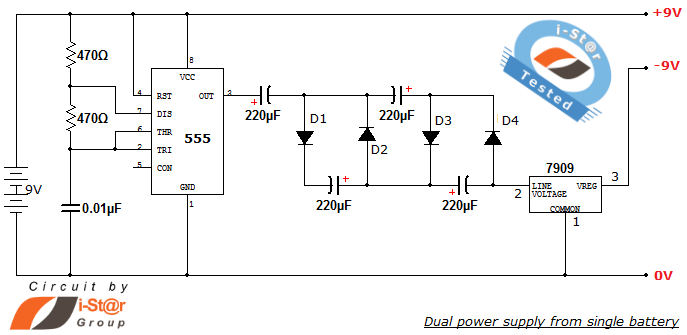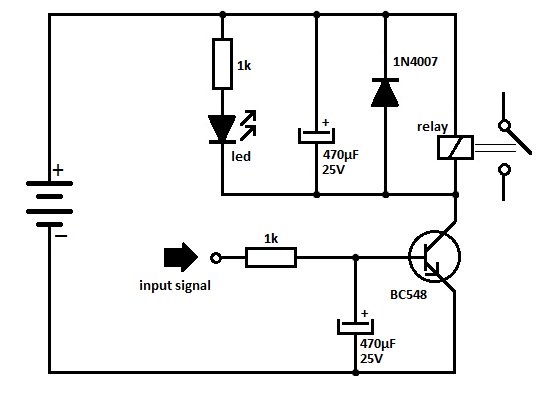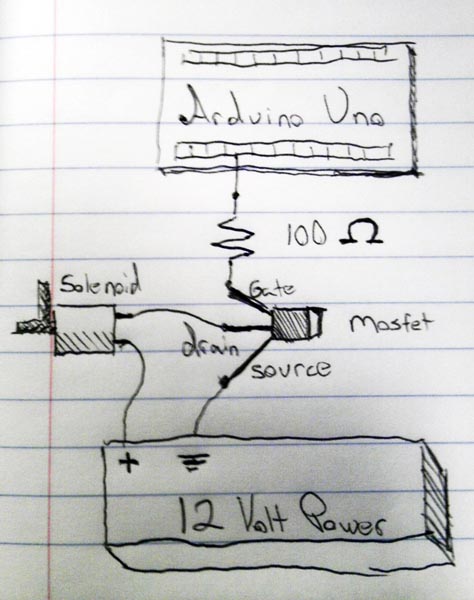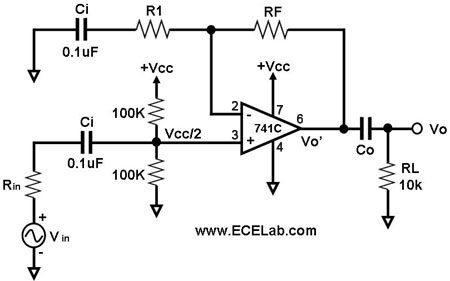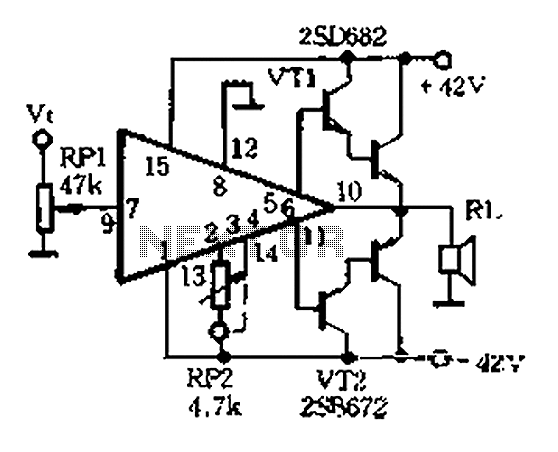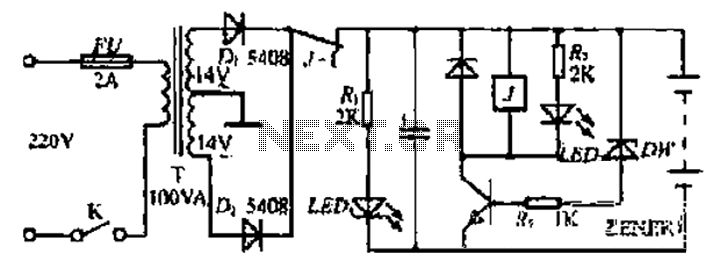
The interface circuit of dot matrix LCD display
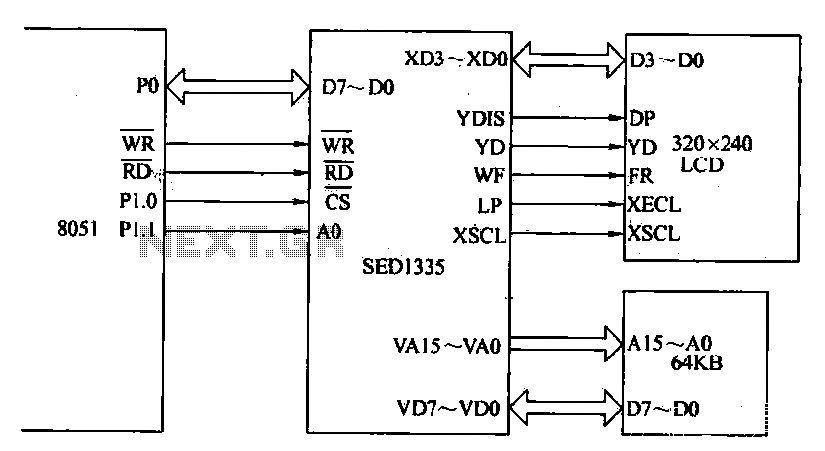
The MCS-51 series single-chip interface circuit 8051 is utilized to control the SED1335 35 dot matrix LCD display. This controller can manage up to a 640x256 dot matrix LCD display for both graphics and character representation, with the capability to address a 64KB display buffer zone. The LCD monitor has various ports: D3 to D0 serves as the data port for display; DP is the power-off control signal for the display; YD represents the valid signal for the Y (column) drive data output; FR is the frame control signal; XECL is the valid signal for the X (line) driving data output; and XSCL is the data latch signal for the data port. The 8051 functions as the data port PO, utilizing assembly language programming with the MOVXA instruction for indirect access to external RAM for data exchange with the SED1335. The C programming language is also employed to access the SED1335 using pointer-based methods.
The MCS-51 microcontroller, specifically the 8051 variant, serves as a robust interface for the SED1335 LCD controller, enabling efficient management of complex graphical and character displays. The SED1335 is designed to support high-resolution output, accommodating up to 640x256 pixels, making it suitable for a wide range of applications from simple text displays to intricate graphics.
The data interface is structured with multiple ports that facilitate various functions. The D3 to D0 ports are dedicated to transmitting pixel data to the LCD, while the DP port allows for the control of the display's power state, ensuring energy efficiency when the display is not in use. The YD and XECL ports are crucial for driving the display, where YD outputs the current column data, and XECL signals the active line for rendering the pixel data.
Control signals such as FR and XSCL play essential roles in synchronizing the display operation. The FR signal indicates the start of a new frame, allowing the controller to refresh the display at a consistent rate. XSCL, on the other hand, is responsible for latching the data, ensuring that the correct pixel information is retained for display.
Programming the 8051 to communicate with the SED1335 can be achieved through assembly language, leveraging the MOVXA instruction for efficient data handling. This instruction allows for indirect access to external RAM, facilitating the transfer of data between the microcontroller and the LCD controller. Additionally, utilizing the C programming language provides a higher-level approach, where pointers can be employed to reference and manipulate data in memory, streamlining the development process and enhancing code readability.
Overall, the integration of the 8051 microcontroller with the SED1335 LCD display controller presents a powerful solution for applications requiring sophisticated visual output, combining flexibility in programming with high-performance display capabilities.It is shown using the MCS-51 series single-chip interface circuit 8051. Chip SED13 35 dot matrix LCD display for the controller, which can control up to 640 256 dot matrix LCD display for graphics and character display, capable of addressing 64KB buffer display buffer zone. FIG role -LCD monitor each port as follows; D3 ~ DO data port for display; DP is no display power-off control signal} YD is Y (column) drive data output valid signal; FR frame control signal; XECL as X ( line) driving data output valid signal; XSCL data port data latch signal.
Using 8051 as the port PO data port, assembly language programming, the use of instruction MOVXA. Ri (Ie indirect access to external RAM) manner SED1335 data exchange. The C programming language, the way places to visit pointer ask SED1335.
The MCS-51 microcontroller, specifically the 8051 variant, serves as a robust interface for the SED1335 LCD controller, enabling efficient management of complex graphical and character displays. The SED1335 is designed to support high-resolution output, accommodating up to 640x256 pixels, making it suitable for a wide range of applications from simple text displays to intricate graphics.
The data interface is structured with multiple ports that facilitate various functions. The D3 to D0 ports are dedicated to transmitting pixel data to the LCD, while the DP port allows for the control of the display's power state, ensuring energy efficiency when the display is not in use. The YD and XECL ports are crucial for driving the display, where YD outputs the current column data, and XECL signals the active line for rendering the pixel data.
Control signals such as FR and XSCL play essential roles in synchronizing the display operation. The FR signal indicates the start of a new frame, allowing the controller to refresh the display at a consistent rate. XSCL, on the other hand, is responsible for latching the data, ensuring that the correct pixel information is retained for display.
Programming the 8051 to communicate with the SED1335 can be achieved through assembly language, leveraging the MOVXA instruction for efficient data handling. This instruction allows for indirect access to external RAM, facilitating the transfer of data between the microcontroller and the LCD controller. Additionally, utilizing the C programming language provides a higher-level approach, where pointers can be employed to reference and manipulate data in memory, streamlining the development process and enhancing code readability.
Overall, the integration of the 8051 microcontroller with the SED1335 LCD display controller presents a powerful solution for applications requiring sophisticated visual output, combining flexibility in programming with high-performance display capabilities.It is shown using the MCS-51 series single-chip interface circuit 8051. Chip SED13 35 dot matrix LCD display for the controller, which can control up to 640 256 dot matrix LCD display for graphics and character display, capable of addressing 64KB buffer display buffer zone. FIG role -LCD monitor each port as follows; D3 ~ DO data port for display; DP is no display power-off control signal} YD is Y (column) drive data output valid signal; FR frame control signal; XECL as X ( line) driving data output valid signal; XSCL data port data latch signal.
Using 8051 as the port PO data port, assembly language programming, the use of instruction MOVXA. Ri (Ie indirect access to external RAM) manner SED1335 data exchange. The C programming language, the way places to visit pointer ask SED1335.
